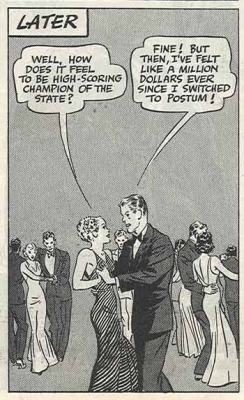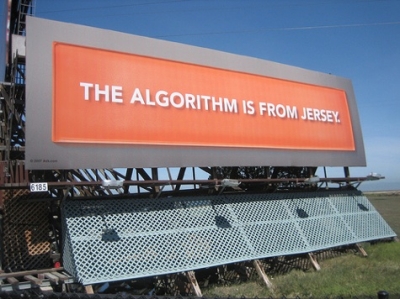
45 + 5 points
What is advertising? by Sean Mahan
April 22nd, 2007 2:03 PM
I'm hoping that whoever ends up with the perfect (or, at least, most perfect) answer to this has a tight, koan-like way of enlightening all of us; it looks like that won't be me.
With only a dictionary definition in the pool so far, I turned to the venerable Wikipedia.
Truth be told, I barely read it past the first sentence: "Advertising is paid communication through medium in which the sponsor is identified and the message is controlled." That's pretty good. Here's my problem, though: I believe the solution to this task should be concise, and not rely on examples. As such, this definition (left by itself) is flawed, because advertising often doesn't identify the sponsor, and - here's the bigger one - is frequently unpaid, in my opinion. (I bet some of the media scholars in the audience would have something to say about "communication through medium," too)
It's silly to get into non-monetary exchange for advertising, and few would argue that there's a big difference between wearing a band's teeshirt and wearing a sandwich board. But now the issue is, how to account for newer forms of advertising, from viral marketing to product placement to political attack ads, without a definition that focuses more on what advertising does than on what it is?
Even trying to think only of examples that people would term "advertising" without hesitation, I kept coming to something like, "that which attempts to create, reinforce, or modify the perception of something, with the aim of affecting the interaction of a person or persons with that thing." Can't have anything about "buying" because of political ads. Can't have anything that specifies that the person marketed to is the same as the person expected to interact with the offering - we're all marketed Tiffany jewelry so that the brand holds enough cachet for those who can buy it.
I'm sure there are others, but some "gotchas" (or, at least, conversation starters) for this include:
* This definitely considers your band teeshirt (or beer sweater) advertising. Me, I'm OK with that.
* The "with the aim of" clause is debatable. But without it, you can easily end up with something like, "advertising is communication" or "advertising is language". And that would just be silly. (cough)
* One thing I like about it is that it leaves room for flowers to be considered advertising. I'm OK with that, too.
Alright, disapprove away! What do you think?
With only a dictionary definition in the pool so far, I turned to the venerable Wikipedia.
Truth be told, I barely read it past the first sentence: "Advertising is paid communication through medium in which the sponsor is identified and the message is controlled." That's pretty good. Here's my problem, though: I believe the solution to this task should be concise, and not rely on examples. As such, this definition (left by itself) is flawed, because advertising often doesn't identify the sponsor, and - here's the bigger one - is frequently unpaid, in my opinion. (I bet some of the media scholars in the audience would have something to say about "communication through medium," too)
It's silly to get into non-monetary exchange for advertising, and few would argue that there's a big difference between wearing a band's teeshirt and wearing a sandwich board. But now the issue is, how to account for newer forms of advertising, from viral marketing to product placement to political attack ads, without a definition that focuses more on what advertising does than on what it is?
Even trying to think only of examples that people would term "advertising" without hesitation, I kept coming to something like, "that which attempts to create, reinforce, or modify the perception of something, with the aim of affecting the interaction of a person or persons with that thing." Can't have anything about "buying" because of political ads. Can't have anything that specifies that the person marketed to is the same as the person expected to interact with the offering - we're all marketed Tiffany jewelry so that the brand holds enough cachet for those who can buy it.
I'm sure there are others, but some "gotchas" (or, at least, conversation starters) for this include:
* This definitely considers your band teeshirt (or beer sweater) advertising. Me, I'm OK with that.
* The "with the aim of" clause is debatable. But without it, you can easily end up with something like, "advertising is communication" or "advertising is language". And that would just be silly. (cough)
* One thing I like about it is that it leaves room for flowers to be considered advertising. I'm OK with that, too.
Alright, disapprove away! What do you think?
























Drat, you cover a lot of the points that I've covered so far in my completion...guess I'm going to have to make it even more thorough.